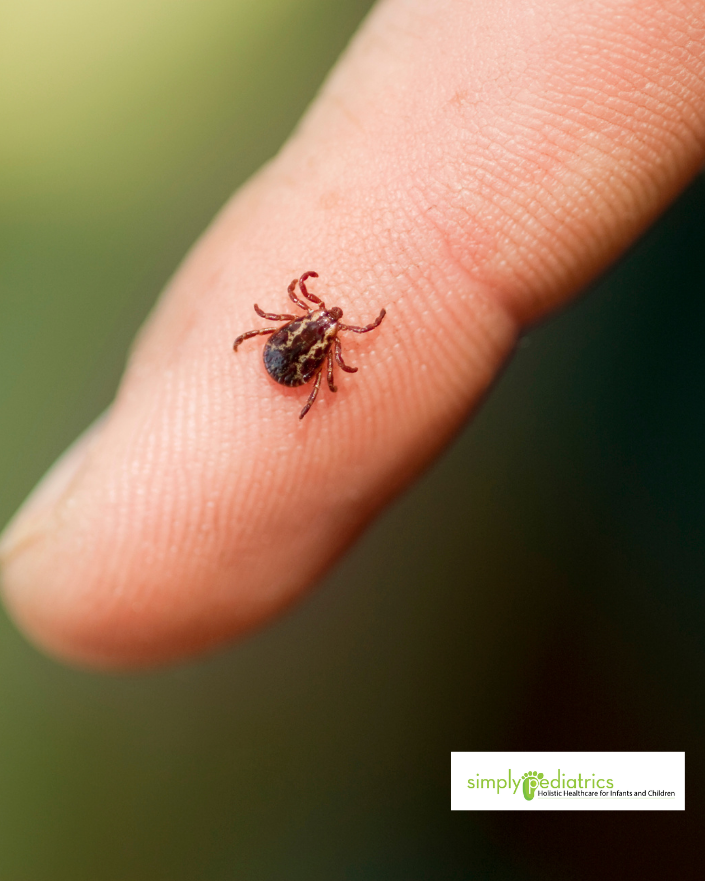
02 Jun Tick-Borne Diseases in the New York Area: What You Need to Know
Lyme Disease
● Tick that spreads it: Blacklegged Tick (Deer Tick, Ixodes Scapularis)
● Germ: Bacteria (Borrelia Burgdorferi)
● How long the tick needs to be attached: 24–36 hours
● How long before symptoms show up: Usually 3–30 days after the bite
● Signs & Symptoms: Fever, chills, headache, muscle/joint aches, tiredness, bullseye-shaped rash (not everyone gets it)
● Can be prevented with medicine? Yes! A single dose of Doxycycline if the tick was on for 24-36+ hours, you’re in a high-risk area, and it’s within 72 hours of removal
● Learn more: CDC Lyme Disease
_________________________________
Anaplasmosis
● Tick that spreads it: Blacklegged Tick (Deer Tick, Ixodes Scapularis)
● Germ: Bacteria (Anaplasma Phagocytophilum)
● How long the tick needs to be attached: 12–24 hours
● How long before symptoms show up: 1–2 weeks after the bite
● Signs & Symptoms: Fever, chills, headache, muscle aches, nausea, sometimes rash
● Can be prevented with medicine? No – no medicine to take ahead of time
● Learn more: CDC Anaplasmosis
_________________________________
Babesiosis
● Tick that spreads it: Blacklegged Tick (Deer Tick, Ixodes Scapularis)
● Germ: Parasite (Babesia Microti)
● How long the tick needs to be attached: 36–48 hours
● How long before symptoms show up: 1–4 weeks after the bite
● Signs & Symptoms: Fever, chills, sweats, headache, body aches, tiredness, jaundice (yellow skin), dark urine in severe cases
● Can be prevented with medicine? No
● Learn more: CDC Babesiosis
_________________________________
Powassan Virus
● Tick that spreads it: Blacklegged Tick (Deer Tick, Ixodes Scapularis) and Groundhog Tick
● Germ: Virus (Powassan Virus)
● How long the tick needs to be attached: As little as 15 minutes
● How long before symptoms show up: 1 week–1 month after the bite
● Signs & Symptoms: Many people have no symptoms; some get fever, headache, vomiting. Severe cases: confusion, seizures, memory problems.
● Can be prevented with medicine? No
● Learn more: CDC Powassan Virus
_________________________________
Borrelia Miyamotoi Disease
● Tick that spreads it: Blacklegged Tick (Deer Tick, Ixodes Scapularis)
● Germ: Bacteria (Borrelia Miyamotoi)
● How long the tick needs to be attached: About 24–36 hours
● How long before symptoms show up: 1–2 weeks after the bite
● Signs & Symptoms: Fever, chills, headache, body aches, tiredness, no rash
● Can be prevented with medicine? No
● Learn more: CDC Borrelia Miyamotoi
_________________________________
Ehrlichiosis
● Tick that spreads it: Lone Star Tick (Amblyomma Americanum), but less common in the Northeast
● Germ: Bacteria (Ehrlichia species)
● How long the tick needs to be attached: 24–48 hours
● How long before symptoms show up: 1–2 weeks after the bite
● Signs & Symptoms: Fever, chills, headache, muscle/joint aches, sometimes confusion or rash
● Can be prevented with medicine? No
● Learn more: CDC Ehrlichiosis
_________________________________
IMPORTANT!
● Only Lyme disease has a medicine (Doxycycline) that can be used after a tick bite to help prevent it.
● For all other tick-borne illnesses, there is no medicine you can take ahead of time.
● That’s why removing ticks as soon as possible (before 24 hours) is the best way to lower your chance of getting sick!
_________________________________
General Tick Bite Prevention Tips
● Wear long sleeves and pants when in grassy or wooded areas
● Use insect repellent/Lemon Eucalyptus based
● Check yourself and your kids for ticks after being outdoors
● Shower soon after coming inside
● Remove attached ticks quickly with tweezers
● Learn more: CDC Tick Prevention
_________________________________
How to Remove a Tick

1. Do not use petroleum jelly, heat, nail polish, or other substances to try and make the tick detach from the skin. This may agitate the tick and force infected fluid from the tick into the skin.
2. Use clean, fine-tipped tweezers. Grab the tick close to the skin, not by the fat part of its body. If you don’t have fine tweezers, you can use regular tweezers or your fingers.
3. Pull the tick out slowly and steadily. Don’t twist or yank it out. This helps keep the tick’s head from getting stuck.
4. If the tick’s head stays in your skin, don’t worry. Your body will usually push it out naturally as it heals. You can try to remove it with tweezers if it’s easy to get to. But if you can’t get it out, just leave it alone.

